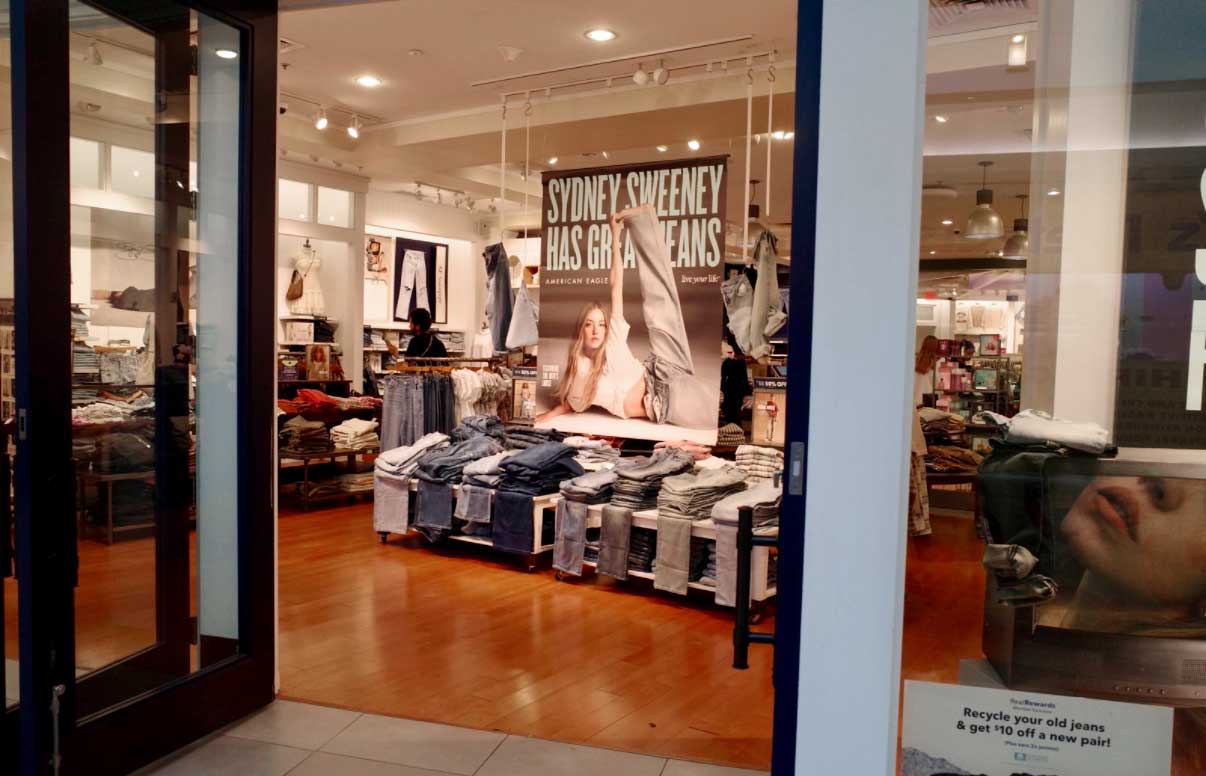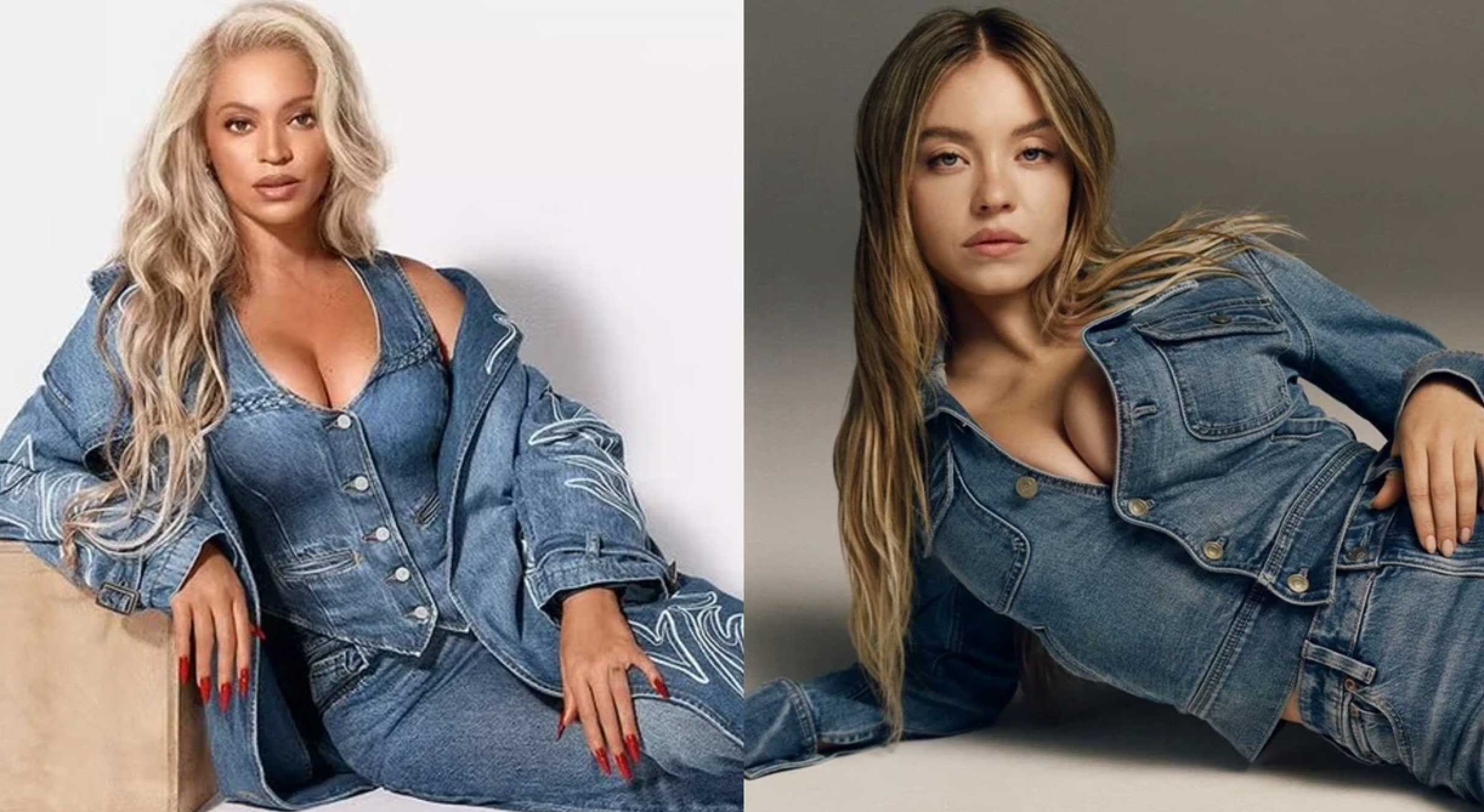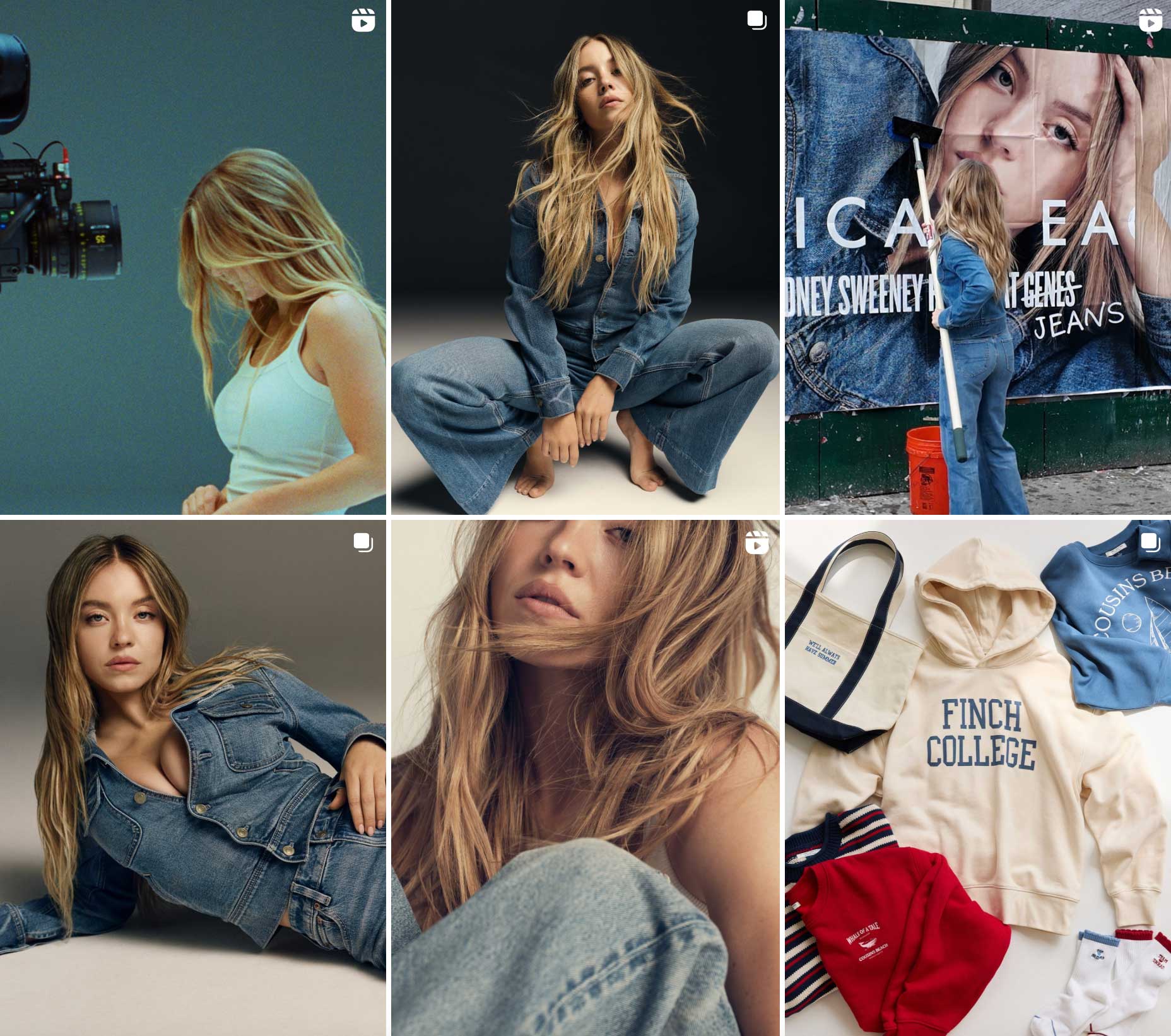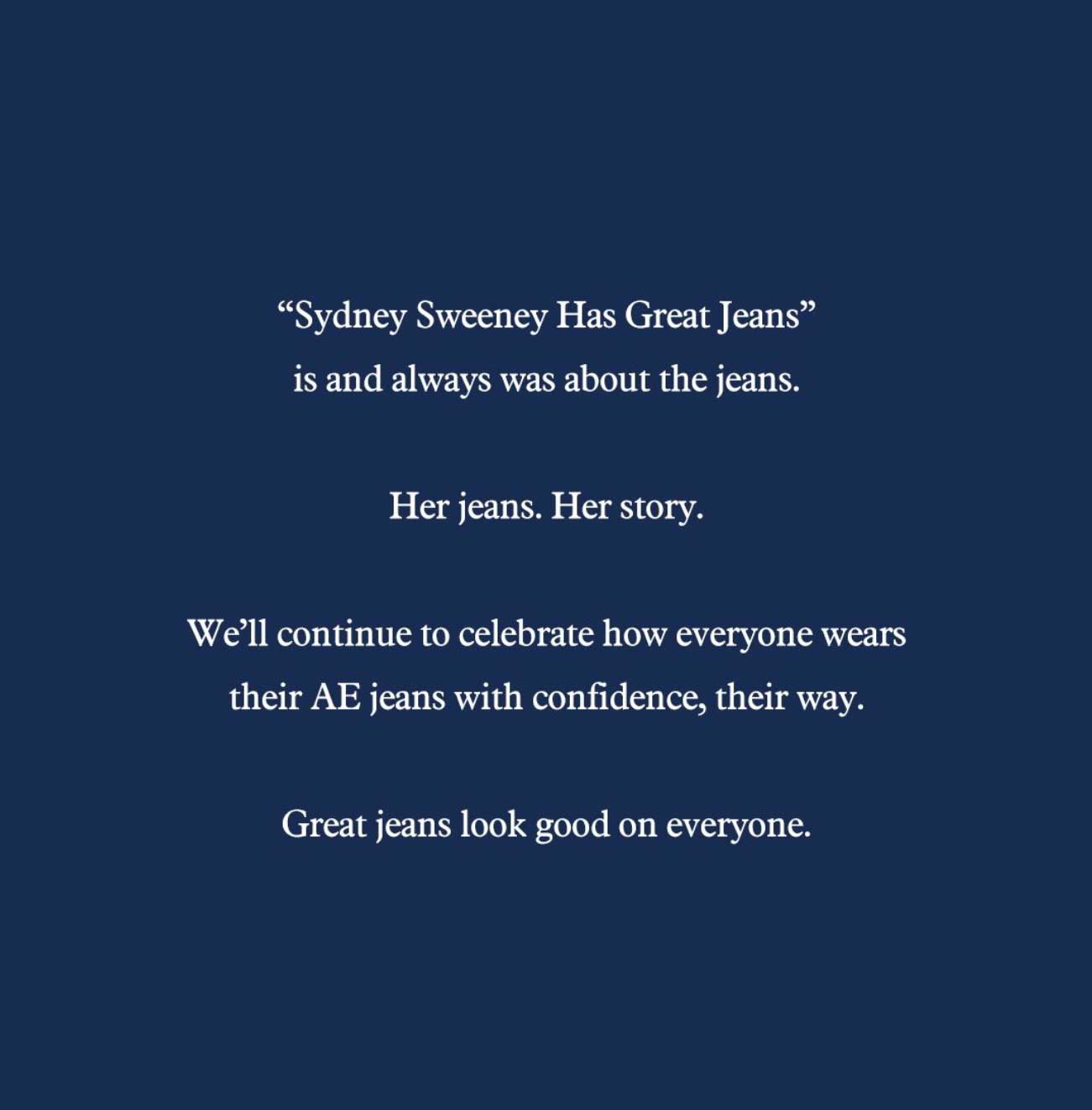

The message is quite simple: “Sydney Sweeney Has Great Jeans.” It’s not about her hair color, her eye color, or even her “body composition.” It’s the fact that she is wearing American Eagle jeans… confidently. She represents the aspiration that all of us have to be the best versions of ourselves. She isn’t a standard representation of beauty—though many critics would like to suggest that is what the ad campaign implies.
She’s the embodiment of a mood—self-assured, put together, and confident.
The ads don't hinge on the ticking of diversity boxes or making a political statement. They hinge on selling a feeling.
And that feeling is universal: the confidence that comes from wearing something you love and looking your best in it.
You don’t have to be white. Or blonde. Or have blue eyes.
Like Sydney says in one of the ads, “Genes are passed down from parents to offspring, often determining traits like hair color, personality, and even eye color. My genes are blue.”
Obviously, she’s talking about the denim itself—making a playful nod to her own physical features, like her eyes, in a clever double meaning.
The wordplay between “jeans” and “genes” is hardly new; it’s been tossed around for decades.
Yet critics have managed to overcomplicate their interpretations, reading layers of intent that likely were never there, and in doing so, missing the nostalgic, straightforward nature of the ad entirely.
The Ad Sells Jeans, Nothing More
The ad campaign is made up of a few short clips.
The most “controversial” ad depicts Sydney Sweeney reclining on a minimalist couch set against a soft, beige backdrop. She’s dressed in loosely-fitted blue jeans, shown buttoning them up as the camera travels from her toes to her head.
In another ad, Sydney is shown working on a classic, vintage car. She closes the hood and walks away, wiping the pretend grease on the backside of her jeans. She gets into the front seat as the narrator states, “Sydney Sweeney Has Great Jeans,” then revs the engine and takes off in a cloud of smoke. (What’s cool is that she actually restores vintage cars as a side hobby.)
Another ad depicts (supposedly) Sydney Sweeney smoothing out her ad on a street billboard (though we don’t see her face). As the video closes, the words “Sydney Sweeney Has Great Genes” appear—only for “genes” to be crossed out and replaced with “jeans” in bold, handwritten text.
The collection of ads is shot with soft, ambient lighting, closeup camera angles, and a vintage feel. It draws focus to both Sydney Sweeney’s presence and the jeans themselves, subtly hinting at their allure without overshadowing the denim.
It’s a classic, nostalgic representation of how denim is meant to feel: classy, comfortable, and confident.
So what’s the big problem?
It’s not the ad itself. Sure, it tends to make references to her body a bit more than most viewers would prefer. But that’s not it.
The Backlash
It’s no secret that we live in a marketing landscape that is burdened by moral, activist-centric lectures and politicized checklists. We see it everywhere. From Nike to Lululemon to Calvin Klein. The focus is hardly on the product and more about the models. They promote unhealthy body standards under the guise of “body positivity,” squeeze in identity politics, and push messages that promote activism over aspiration.
They tells us that certain representations of self are more acceptable than others—and they're not the kind that are good for us.
Almost immediately following the launch of the ad campaign, criticism began to surface online.
Some called the ad “tone-deaf,” others labeled it a showcase for white supremacy, and a few even went so far as to suggest it resembled Nazi propaganda.
She’s a fair-skinned woman with blonde hair and blue eyes. And apparently, that alone was enough for some to sound the alarm.
(If you can’t tell, I’m kidding—physical traits are hardly a reason to level such extreme accusations, especially when the ads themselves are clearly about denim, not doctrine.)
The popular word of the week following the campaign launch? Eugenics.
All of this, why?
Because Sydney Sweeney is not the kind of diverse, inclusive model audiences have grown accustomed to seeing in recent campaigns. Her presence alone feels like a disruption to the current advertising norm.
The truth is, Sydney Sweeney’s ads aren't something we haven’t seen before. Beyonce recently donned a similar outfit for a Levi’s advertisement. Take a look at the two different ads side-by-side. What do you see? Make a note of what they’re wearing, how they’re posed, the color of their hair, and so on.
The two ads are nearly identical in concept. The difference? It lies in the models themselves.

Yet, the public reaction couldn’t have been more different, revealing that much of the controversy stems not from the ad’s content, but from who is hired to promote it.
But Sydney Sweeney is not a disruption.
She’s a return to ideals that we’ve so quickly lost.
When Confidence was the Marketing Strategy
The ad’s message is straightforward: blend timeless style and confidence into a thirty-second clip, and you have a prescription worth pursuing.
These qualities are good and aspirational—a reminder that looking and feeling your best should never be seen as controversial. The message offers a vision not of perfection, but of refinement and intentional self-presentation.
When pursued in a healthy way, these traits foster self-respect and a conscious contentment in how we presents ourselves.
The American Eagle ad aims to achieve just that—bringing in a spokesperson who embodies confidence, style, and ease.

Sydney Sweeney doesn’t just wear the jeans; she wears the mood. The feeling. Her presence communicates the campaign’s message without needing explanation: effortless confidence, presented with a wink, not a lecture.
It just shows a woman looking confident in her jeans—and invites the viewer to feel the same.
And this is where the controversy lies.
The public often struggles with the concept of aspiration. Many would rather be affirmed—so they gravitate toward marketing centered on acceptance. There’s comfort in seeing someone who looks like you, acts like you, and requires no change.
But aspiration asks more. It invites effort, improvement, and the pursuit of something higher—something better. And for some, that’s uncomfortable.

Aspiration Doesn’t Equal Exclusion—It’s a Call For Improvement
In the end, aspiration is not the enemy of inclusion. When done thoughtfully, it can inspire people to care for themselves, to present themselves well, and to believe they can embody a better version of who they are. That’s not about exclusion—it’s about possibility.
That is what the Sydney Sweeney American Eagle ad is all about.
Not to mention, aspiration sells. The brand has experienced a huge uptick in sales, consumer traffic across the website, social platforms, and in-stores, and an increase in stock.
Perhaps other brands should take note.
Because when you remind people of what they could be—confident and put-together—they don’t feel left out. They feel called up.
And in a culture so often focused on making everyone feel comfortable exactly where they are, there’s something quietly radical—and deeply effective—about inviting them to reach higher.

Sierra Ozolins is a West Michigan native, currently a student at Hope College. As an athlete, she is passionate about fitness—from running to weightlifting. With a interest for politics and lifestyle, she is intrigued how local culture, community, and everyday events shape the world around her—often with an iced coffee in hand and her dog by her side.